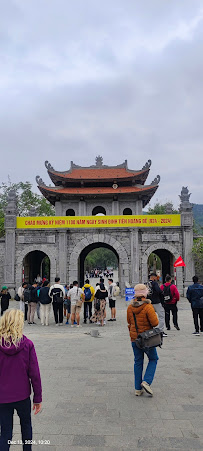Vietnam Temperature in August
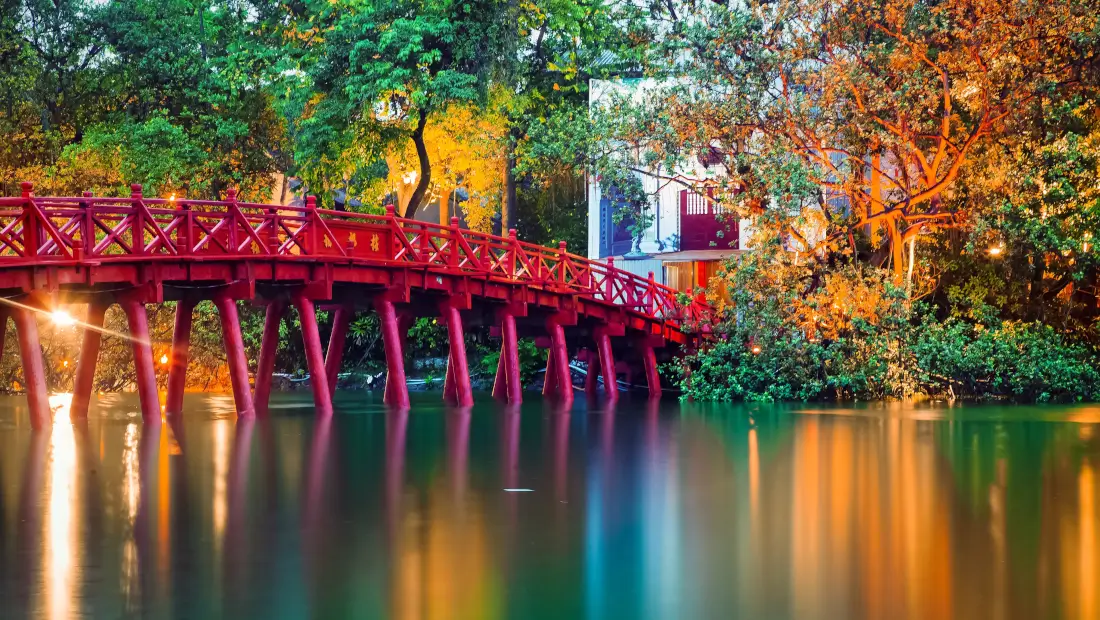
- Average Temperature: 26°C–32°C (79°F–90°F) in cities; 20°C–25°C (68°F–77°F) in highlands like Sapa.
- Rainfall Pattern: Moderate to heavy rains, usually in short afternoon bursts; ~250 mm in the month....
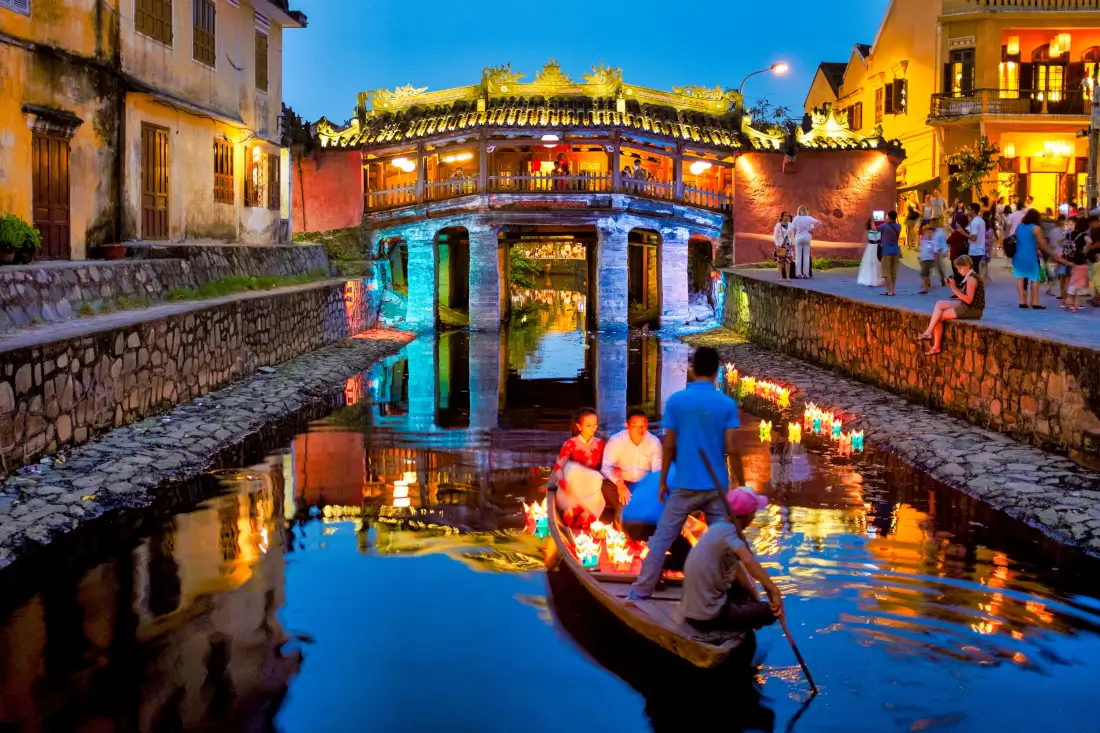
- Average Temperature: 28°C–34°C (82°F–93°F).
- Rainfall Pattern: Low to moderate rain; brief showers, mostly late afternoon; ~100–150 mm total.
- Humidity: Around 75%, lower than...
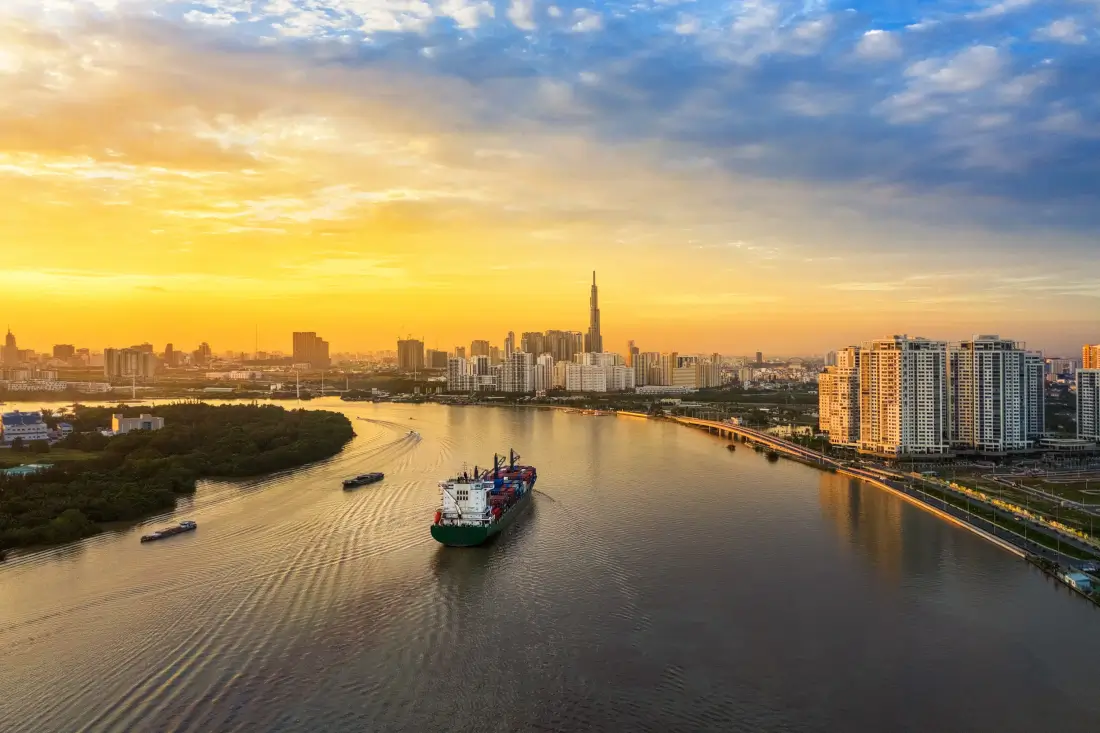
- Average Temperature: 24°C–31°C (75°F–88°F).
- Rainfall Pattern: Frequent short downpours, mainly between 2–5 PM; ~300 mm total.
- Humidity: Around 85%, especially in the Mekong ...
Tourist Attractions in Vietnam to Visit in August
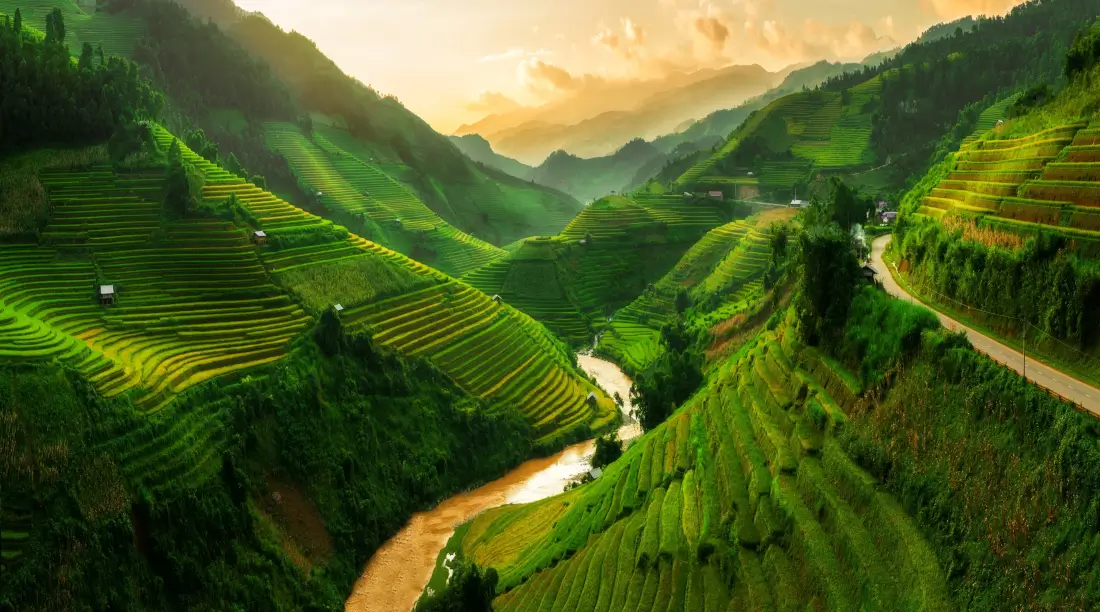
Vietnam's temperature in August brings a mix of sunny skies, lush greenery, and refreshing rains, making it an excellent time to explore diverse destinations across the country. Here are the top picks for this season:
- Sapa (Nor...
Frequently Asked Questions (FAQs)
Vietnam’s temperature in August can be rewarding if you plan strategically. The northern mountains, such as Sapa, offer cooler, misty escapes, while central beach cities like Da Nang and Nha Trang enjoy plenty of sunshine, despite occasional showers. Southern Vietnam remains warm and lush, with the Mekong Delta’s floating markets in full swing. Since August is part of the rainy season in many areas, landscapes are greener, and waterfalls are at their most impressive. Fewer tourists in some regions mean better hotel deals and less crowded attractions. With a mix of sun, rain, and vibrant scenery, it’s a month that appeals to travellers who enjoy both cultural experiences and nature’s beauty. Just pack light rain gear to stay comfortable.
Vietnam's temperature in August is usually hot, though regional variations make the experience different depending on where you go. Northern cities like Hanoi average around 26–32°C, with high humidity making it feel warmer. Central Vietnam can see slightly higher temperatures, ranging from 27–34°C, especially in coastal cities like Hoi An and Da Nang. In the south, Ho Chi Minh City stays consistently hot, hovering between 25–33°C, with tropical showers offering some relief. Higher altitude areas such as Dalat and Sapa enjoy cooler weather, averaging 18–25°C. While the warmth is prominent, occasional rain and cloud cover provide refreshing breaks. Travellers should stay hydrated, wear breathable clothing, and prepare for both sunshine and rain to fully enjoy the diverse landscapes despite the heat.
Yes, August falls within the rainy season for most of Vietnam, but the pattern varies across regions. Northern Vietnam, including Hanoi, sees frequent but short-lived showers, often in the afternoon or evening. Central Vietnam, especially areas like Hue, Da Nang, and Hoi An, experiences more sunshine with fewer wet days compared to the north and south. The southern region, including Ho Chi Minh City and the Mekong Delta, gets tropical downpours that are usually intense but brief. These rains help cool the air and refresh the scenery, leaving behind lush greenery. Despite the wet conditions, mornings are often dry, making them ideal for sightseeing. If you plan accordingly, the rain can enhance the travel experience, especially for photographers who love dramatic skies and vibrant colours under the Vietnam temperature variations.
The temperature range in Vietnam during August is broad due to its diverse geography. In the north, areas like Hanoi typically see 26–32°C, with mountainous regions such as Sapa cooling down to 18–24°C. Central Vietnam, including Da Nang and Hoi An, remains warm at 27–34°C, perfect for beachgoers but with occasional rain showers. Southern Vietnam, such as Ho Chi Minh City, stays tropical with temperatures between 25–33°C, paired with high humidity and afternoon downpours. Coastal areas generally feel hotter due to direct sun exposure, while highland towns like Dalat offer a pleasant escape with averages of 18–22°C. This wide range means you can find both cool retreats and sunny beach spots within the same trip, making August a month of diverse Vietnam Temperature in August experiences.
In August, central Vietnam often enjoys the most favourable conditions for travellers. Cities like Da Nang, Hoi An, and Nha Trang experience plenty of sunshine, warm seas, and fewer rainy days compared to the north and south. While short showers can still occur, they are less frequent and often pass quickly, leaving clear skies for sightseeing and beach activities. This region’s coastal charm is complemented by nearby attractions like the Marble Mountains and My Son Sanctuary. The balance of warm temperatures, moderate rainfall, and vibrant scenery makes central Vietnam a top choice for August trips. Whether you’re lounging on sandy shores or exploring cultural landmarks, the Vietnam weather in August in this region offers a pleasant mix of summer vibes and manageable humidity.
Yes, you can enjoy many of Vietnam’s beaches in August, especially in the central region. Destinations such as My Khe Beach in Da Nang, An Bang Beach in Hoi An, and Nha Trang’s long coastline offer warm waters, golden sands, and generally good swimming conditions. While the north and south may see heavier rains, central beaches often have sunny mornings and only occasional afternoon showers. Water sports like snorkelling, jet skiing, and stand-up paddleboarding are popular this time of year. Even if a brief shower interrupts your day, beach cafés and seaside restaurants provide cosy shelter. With attentive planning, your coastal holiday can be both relaxing and scenic under the warm Vietnam temperature in August.
August in Vietnam offers a blend of cultural, nature-based, and seaside activities. In the north, visit Hanoi’s historic Old Quarter or cruise through Halong Bay’s limestone islands. Central Vietnam is perfect for beach days in Da Nang, lantern-lit evenings in Hoi An, and exploring Hue’s imperial citadel. The south offers vibrant markets in Ho Chi Minh City and lush boat trips along the Mekong Delta. Nature lovers can head to Phong Nha for cave adventures or trek through national parks. Occasional rains add freshness to the scenery without dampening the fun. Whether you’re into food, history, or the outdoors, the variety of experiences during the Vietnam temperature patterns in August ensures a fulfilling trip.
Yes, trekking in Sapa is possible in August, but you should prepare for wet and muddy trails. This is the peak of the rainy season in northern Vietnam, and while the lush green rice terraces are at their most stunning, showers can be frequent, especially in the afternoons. Morning treks often provide clearer views of the valleys and mountains. Trails can be slippery, so sturdy footwear is essential, and a lightweight rain jacket is highly recommended. Despite the rain, the cool mountain air and vibrant scenery make trekking rewarding. Just plan for flexible schedules and enjoy the unique charm of Sapa under the seasonal Vietnam Temperature in August conditions.
August in Vietnam generally sees moderate tourist crowds. International visitor numbers are lower than in the peak winter months, but some domestic travel peaks occur due to summer school holidays, especially in the first half of the month. Popular sites in Da Nang, Hoi An, and Nha Trang may see more local families enjoying beach vacations, while northern attractions like Hanoi and Halong Bay remain relatively calm. The south tends to be quieter as the rainy season keeps crowds away. This makes it a good time to explore major landmarks without long queues. If you prefer a more relaxed pace, the Vietnam temperature in August, combined with fewer tourists, can make sightseeing more enjoyable.
Packing for the Vietnam temperature in August requires a mix of lightweight and rain-ready clothing. Breathable fabrics like cotton and linen are ideal for the warm and humid conditions. Include a compact umbrella or lightweight rain jacket for sudden showers, especially in the north and south. Comfortable walking shoes or sandals are a must, while trekking plans in Sapa call for sturdy footwear. Swimwear is essential if you’re heading to the beaches in central Vietnam. A hat, sunglasses, and sunscreen will protect against strong sun, and insect repellent is useful in tropical areas. Dressing in layers allows comfort across regions with varying weather in August.
Yes, August can be a cost-effective month to visit Vietnam, particularly in the latter half when domestic travel slows after school holidays. Airfares and hotel rates often drop compared to the peak season from December to April. Many hotels in beach destinations offer attractive deals to encourage visitors despite the risk of rain. Tours, transport, and dining remain affordable year-round, but August’s reduced demand means you may enjoy extra discounts or complimentary upgrades. If you’re flexible with travel dates and don’t mind occasional showers, August combines scenic landscapes, cultural richness, and lower expenses, making it a smart choice under the pleasantly warm Vietnam temperature for budget-conscious travellers.
August in Vietnam features several cultural and seasonal events worth experiencing. One of the most significant is the Vu Lan Festival (Ghost Month), held on the 15th day of the seventh lunar month. Families honour their ancestors with offerings and temple visits, creating a deeply spiritual atmosphere. In central Vietnam, lantern-lit streets in Hoi An glow beautifully during the monthly Lantern Festival, which often falls in August. Some regions also celebrate local harvest festivals, particularly in rural areas. Although August is part of the rainy season in many places, these events bring warmth and community spirit. Travellers can enjoy cultural immersion while adapting plans to the Vietnamese weather in August, ensuring they don’t miss unique traditions even with occasional showers.
No, August is generally not the peak tourist season in Vietnam. While the first half of the month may see an increase in domestic travel due to summer school holidays, international tourist numbers are usually lower compared to the dry-season months of December through April. This means shorter queues at popular attractions, more availability in hotels, and often better deals. Coastal destinations in central Vietnam might feel busier with local vacationers, but northern and southern regions remain relatively calm. The mix of warm Vietnam temperatures in August conditions, moderate crowd levels, and off-season pricing makes August a good choice for travellers seeking a balance between affordability and comfort.
Yes, the weather differs significantly between the northern and southern parts of Vietnam in August. Northern Vietnam, including Hanoi, experiences warm temperatures of around 26–32°C with frequent but short showers. Central Vietnam, such as Da Nang and Hoi An, is sunnier, with temperatures between 27–34°C and fewer rainy days. Southern Vietnam, including Ho Chi Minh City and the Mekong Delta, has a tropical climate with temperatures around 25–33°C and heavier afternoon downpours. These variations mean travellers can choose regions based on their weather preferences. Understanding these patterns helps plan activities around the Vietnam temperature shifts across the country in August.
Island trips in Vietnam during August depend on your destination choice. Phu Quoc and Con Dao, located in the south, experience heavier rainfall and choppier seas during this month, which can limit water activities and cause occasional ferry cancellations. However, central coast islands such as Cham Island near Hoi An or Ly Son Island often enjoy sunnier conditions with calmer waters. If your main goal is diving or snorkelling, central Vietnam’s offshore spots are more reliable in August. Always check local forecasts before booking, as tropical showers can be sudden. Warm Vietnam temperatures in August conditions still make island visits pleasant if planned strategically.
Yes, swimming and snorkelling are possible in August, especially in central Vietnam. Beaches in Da Nang, Hoi An, and Nha Trang often have calm waters and sunny mornings perfect for water activities. However, visibility may be reduced after heavy rains, particularly in the north and south. Phu Quoc and Con Dao can have rougher seas due to the southwest monsoon, making snorkelling conditions less ideal. Always follow local safety advice and check water conditions before swimming. If the weather permits, you can still enjoy coral reefs, gentle waves, and warm seas under the inviting Vietnam weather in August, especially in the central region.
While August brings some risk of weather-related travel delays, they are usually manageable with flexible planning. Short-lived but heavy rains in the north and south can cause occasional flight delays, road flooding, or ferry cancellations, especially to southern islands. Central Vietnam generally has fewer disruptions, with showers often limited to brief afternoon bursts. Train and bus services usually operate as scheduled, though rural or mountainous routes may experience temporary closures due to landslides. Keeping updated with local weather reports and booking refundable tickets can help minimise inconvenience. The warm Vietnam temperature in August makes most travel smooth despite occasional interruptions.
In August, Vietnam enjoys relatively consistent daylight hours. Sunrise typically occurs between 5:30 AM and 5:45 AM, while sunset falls around 6:15 PM to 6:30 PM across most regions. This gives travellers ample time to enjoy sightseeing, beach outings, and evening strolls. Early mornings are ideal for exploring markets, taking photographs, or trekking before the heat and humidity peak. Sunset hours, especially along the coast, offer beautiful golden skies and cooler temperatures. Whether in the mountains or by the sea, the lighting in August adds charm to outdoor experiences, perfectly complementing the warm Vietnam temperature and seasonal atmosphere.
Air quality in Vietnam during August is generally good, especially compared to the winter months when haze can occur in northern areas. The frequent rains help clear dust and pollutants from the air, leaving skies fresher and visibility better. Coastal and highland regions often enjoy clean, crisp air, while larger cities like Hanoi and Ho Chi Minh City may still have pockets of pollution due to traffic and urban activity. For sensitive travellers, wearing a light mask in busy areas can be helpful. Overall, the combination of rainfall, greenery, and open landscapes in the Vietnamese weather in August contributes to a healthier atmosphere for most visitors.
Yes, Hanoi is hot and humid in August, with average temperatures ranging from 26–32°C. The high humidity can make it feel warmer, especially during midday. Morning and evening are more comfortable for outdoor exploration, while afternoons often bring short, heavy showers that provide a brief cooling effect. The city’s parks, lakes, and shaded streets offer some relief from the heat. Staying hydrated, wearing light clothing, and taking breaks indoors during the hottest hours are recommended. Despite the warmth, Hanoi in August has a lively, tropical charm, making it enjoyable for travellers who adapt to the Vietnam Temperature in August conditions.














